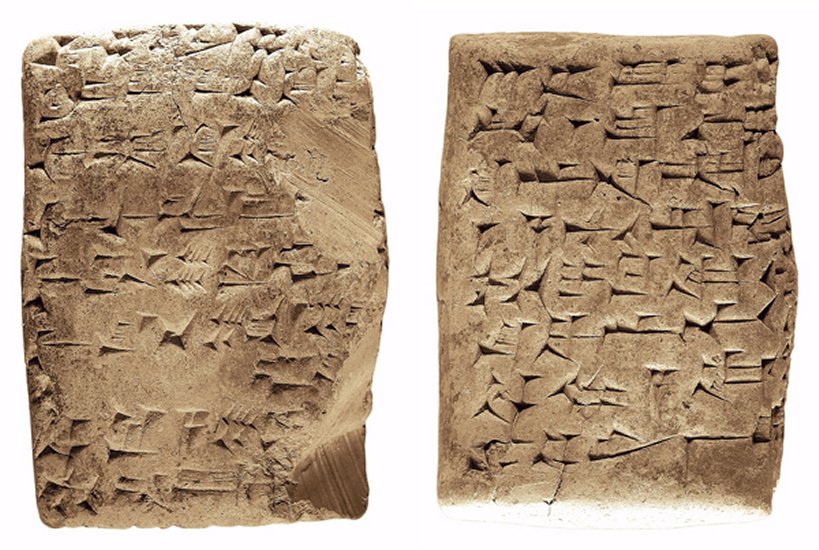Modern Banking Concept Started In Ancient Babylonian Temples
Ellen Lloyd - AncientPages.com - The history of banks can be traced to ancient Babylonian temples in the early 2nd millennium BC. In Babylon at the time of Hammurabi, there are records of loans made by the priests of the temple. Temples took in donations and tax revenue and amassed great wealth. Then, they redistributed these goods to people in need such as widows, orphans, and the poor.
After a thousand years, the priests who ran the temples had so much money that the concept of banking came up as an idea. Around the time of Hammurabi, in the 18th century BC, the priests allowed people to take loans. Old Babylonian temples made numerous loans to poor and entrepreneurs in need. Among many other things, the Code of Hammurabi recorded interest-bearing loans.
Cuneiform tablet detailing a loan of silver, c. 1800 BC. The text reads:
“3 1/3 silver sigloi, at interest of 1/6 sigloi and 6 grains per sigloi, has Amurritum, servant of Ikun-pi-Istar, received on loan from Ilum-nasir. In the third month she shall pay the silver.”
1 sigloi=8.3 grams.
The loans were made at reduced below-market interest rates, lower than those offered on loans given by private individuals, and sometimes arrangements were made for the creditor to make food donations to the temple instead of repaying interest. Cuneiform records of the house of Egibi of Babylonia describe the families financial activities dated as having occurred sometime after 1000 BC and ending sometime during the reign of Darius I, show a "lending house" a family engaging in "professional banking."
In ancient Egypt and Mesopotamia gold was deposited in temples for safe-keeping. There were three types of banks operating within Egypt, royal and private.
See also:
Our 7-Day Week Can Be Traced To Babylonians Who Started Using It 4,000 Years Ago
Food And Clothing Of Middle Class Of The Sumerian Society
What Did Houses For Ordinary People In Sumer Look Like?'
During the whole Graeco-Roman period (332 B.C. - 642 A.D.), banks were of three types, either privately run, leased, or owned by government, of which included within this last group were some organizations having dual roles including being additionally treasury departments. The recording of the gathering of money to buy grain in a pharaoh's kingdom as ordered by the Biblical Joseph, is written within the book Genesis of the Bible, and this money was placed within the house of the pharaoh. Joseph bought with the money of the pharaoh a large amount of corn, having this then laid in the public granaries.
In ancient Greece, private entrepreneurs, as well as temples and public bodies, undertook financial transactions. They took deposits, made loans, changed money from one currency to another and tested coins for weight and purity.
They even engaged in book transactions. Money lenders accepted payment in one Greek city and arranged for credit in another, avoiding the need for the customer to transport or transfer large numbers of coins.
Ancient Rome adopted the banking practices of Greece. So, the history of banking can be traced to very ancient times.
If you are interested in the history of money, don't miss our comprehensive article on the subject:
Our Lives Have Always Been Manipulated By Money – Part 1 - 3
Written by: Ellen Lloyd - AncientPages.com
Copyright © AncientPages.com All rights reserved. This material may not be published, broadcast, rewritten or redistributed in whole or part without the express written permission of AncientPages.com
Expand for referencesMore From Ancient Pages
-
 Ancient Village Of Zalipie Where Flowers Are Painted On All Houses
Ancient Traditions And Customs | May 29, 2019
Ancient Village Of Zalipie Where Flowers Are Painted On All Houses
Ancient Traditions And Customs | May 29, 2019 -
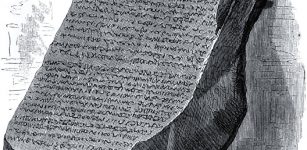 Rosetta Stone – Artifact That Solves The Riddle Of Egyptian Hieroglyphics
Artifacts | Sep 28, 2015
Rosetta Stone – Artifact That Solves The Riddle Of Egyptian Hieroglyphics
Artifacts | Sep 28, 2015 -
 Neanderthal Genes Influence Your Mood And Much More – Study Shows
Archaeology | Oct 6, 2017
Neanderthal Genes Influence Your Mood And Much More – Study Shows
Archaeology | Oct 6, 2017 -
 Rare Gold Foils Found In Ancient Egyptian Tombs At Tel El-Deir In New Damietta
Archaeology | Jul 24, 2024
Rare Gold Foils Found In Ancient Egyptian Tombs At Tel El-Deir In New Damietta
Archaeology | Jul 24, 2024 -
 Graveyards Of Ancient British And French Giants Revealed In Old Documents And Journals
Ancient Mysteries | Jul 4, 2020
Graveyards Of Ancient British And French Giants Revealed In Old Documents And Journals
Ancient Mysteries | Jul 4, 2020 -
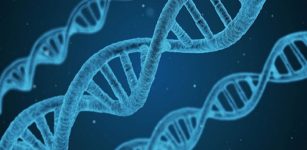 New Models Shed Light On Life’s Origin
DNA | Feb 13, 2023
New Models Shed Light On Life’s Origin
DNA | Feb 13, 2023 -
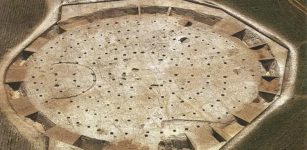 Why Was Dorset Ancient Mega Henge Built In Such A Hurry?
Archaeology | Nov 5, 2020
Why Was Dorset Ancient Mega Henge Built In Such A Hurry?
Archaeology | Nov 5, 2020 -
 Mysterious Lost Kingdom Of Urartu And Its Enigmatic History
Featured Stories | Jun 22, 2014
Mysterious Lost Kingdom Of Urartu And Its Enigmatic History
Featured Stories | Jun 22, 2014 -
 Puzzling Ancient Artifacts Found In Canadian Mountains Defy Explanation – Scientists Say
Featured Stories | Aug 27, 2024
Puzzling Ancient Artifacts Found In Canadian Mountains Defy Explanation – Scientists Say
Featured Stories | Aug 27, 2024 -
 Graeco-Roman Era Rock-Cut Tomb Unearthed In Aswan West Bank, Upper Egypt
Archaeology | Apr 24, 2019
Graeco-Roman Era Rock-Cut Tomb Unearthed In Aswan West Bank, Upper Egypt
Archaeology | Apr 24, 2019 -
 Mystery Of Ancient Gaza Wine – New Insight
Archaeology | Apr 26, 2023
Mystery Of Ancient Gaza Wine – New Insight
Archaeology | Apr 26, 2023 -
 Common Ancestor Of Neanderthals And Humans That Lived 700,000 Years Ago Holds Clues To A DNA Mystery
Archaeology | Feb 22, 2023
Common Ancestor Of Neanderthals And Humans That Lived 700,000 Years Ago Holds Clues To A DNA Mystery
Archaeology | Feb 22, 2023 -
 King Solomon’s Copper Mines In The Timna Valley Did Not Pollute Environment – Geochemical Surveys Reveal
Archaeology | Dec 23, 2024
King Solomon’s Copper Mines In The Timna Valley Did Not Pollute Environment – Geochemical Surveys Reveal
Archaeology | Dec 23, 2024 -
 Venus Cloacina: Roman Goddess Of Sewers And Drains
Featured Stories | Dec 19, 2019
Venus Cloacina: Roman Goddess Of Sewers And Drains
Featured Stories | Dec 19, 2019 -
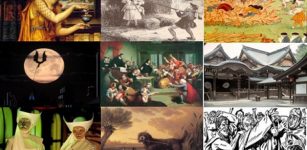 10 Incredible And Bizarre Ancient Cases Of Mass Hysteria
Featured Stories | Jul 14, 2015
10 Incredible And Bizarre Ancient Cases Of Mass Hysteria
Featured Stories | Jul 14, 2015 -
 On This Day In History: Cliff Palace At Mesa Verde, Colorado Discovered – On Dec 18, 1888
News | Dec 18, 2016
On This Day In History: Cliff Palace At Mesa Verde, Colorado Discovered – On Dec 18, 1888
News | Dec 18, 2016 -
 First Scandinavian farmers were far more advanced than previously thought
News | Aug 23, 2015
First Scandinavian farmers were far more advanced than previously thought
News | Aug 23, 2015 -
 Perforated Shells Were Used By Humans 120,000 Years Ago
Archaeology | Jul 10, 2020
Perforated Shells Were Used By Humans 120,000 Years Ago
Archaeology | Jul 10, 2020 -
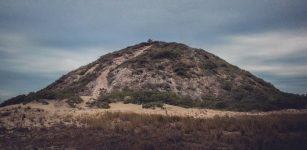 Pre-Columbian Societies Declined 2,000 Years Ago Due To Sea Level Fall
Archaeology | Dec 22, 2021
Pre-Columbian Societies Declined 2,000 Years Ago Due To Sea Level Fall
Archaeology | Dec 22, 2021 -
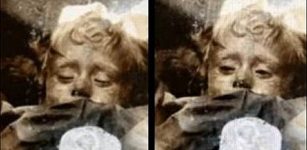 The Mystery Of Blinking Mummy Of Rosalia Lombardo
Featured Stories | Jun 23, 2014
The Mystery Of Blinking Mummy Of Rosalia Lombardo
Featured Stories | Jun 23, 2014

